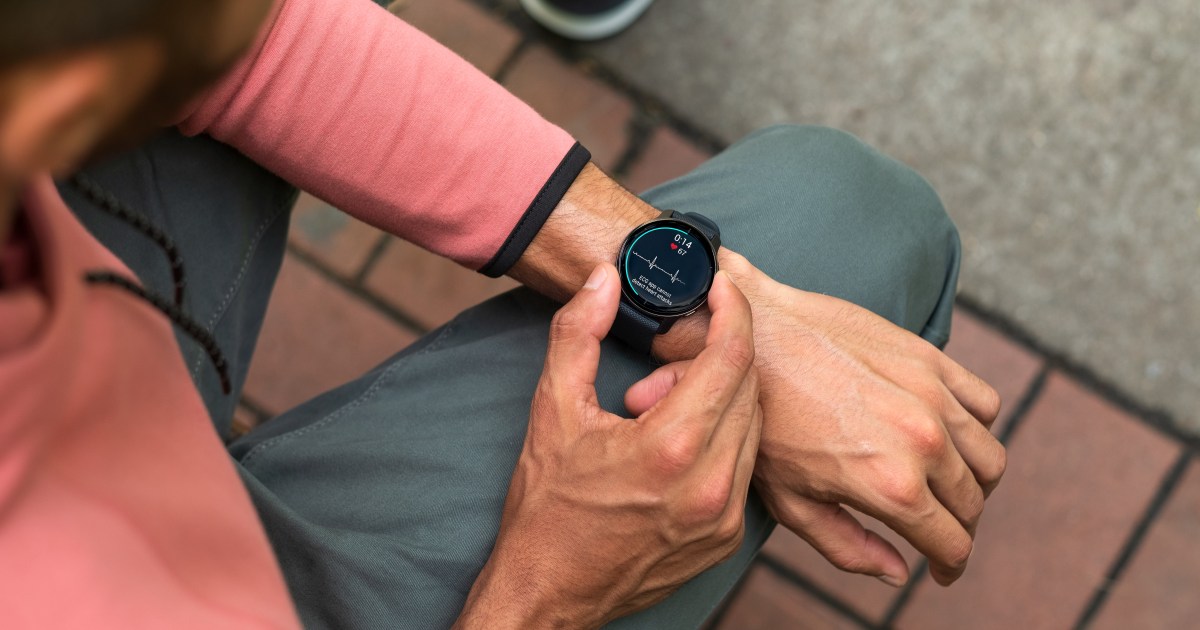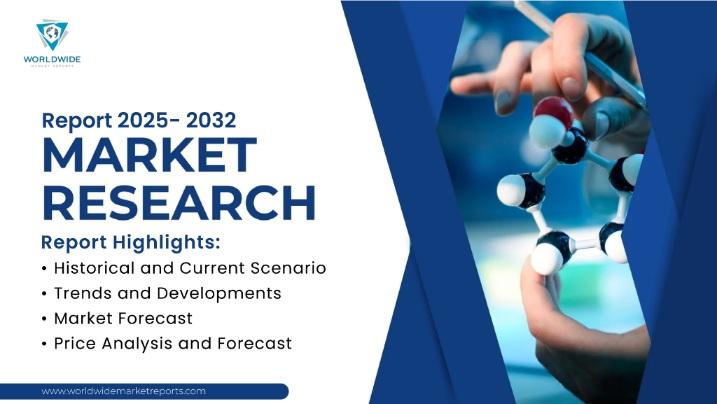Stroke Rehabilitation Market Size Expected to Reach USD

Ottawa, Feb. 19, 2025 (GLOBE NEWSWIRE) — The global stroke rehabilitation market size was valued at USD 285 million in 2024 and is predicted to hit around USD 736.90 million by 2033, a study published by Towards Healthcare a sister firm of Precedence Statistics.

Get All the Details in Our Solutions – Download Brochure:
Market Overview and Key Statistics
Neurological rehabilitation makes use of a wide variety of therapeutic modalities and methodologies from various philosophical traditions. The number of randomized control trials (RCT) pertaining to physiotherapy therapies used in stroke has increased exponentially during the last ten years. As soon as feasible after the stroke, rehabilitation should begin in the hospital; it’s critical to make well-informed judgments about rehab as soon as possible. One of the most frequent causes of impairment in adults is stroke. In 70–85% of first strokes, hemiplegia occurs.
Around the world, 110 million people have experienced a stroke; 15 million strokes occur annually; 60% of strokes occur in people under 70, 38% in people under 65, and 16% in people under 50. 5 million stroke-related fatalities globally, 5 million strokes that leave survivors incapacitated. In the United States, there are 795,000 strokes annually: 610,000 strokes that occur for the first time, 185,000 strokes in patients who have already had a stroke, the time between stroke-related deaths is 3½ minutes, 80% of strokes are preventable, and 38% of people are aware of all the major symptoms of a stroke.
Get the latest insights on healthcare industry segmentation with our Annual Membership:
Driving Factors for Market Growth
Technological advancements
The market expansion for stroke rehabilitation is being revolutionized by technological advancements, which are a major growth driver. The efficacy of rehabilitation therapy is being improved by advancements in rehabilitation technology including virtual reality (VR) systems, robotic-assisted devices, and mobile health applications. By incorporating artificial intelligence (AI) into rehabilitation techniques, recovery results can be optimized through real-time monitoring and therapeutic modifications. Additionally, telerehabilitation options have become more popular, particularly since the pandemic, enabling patients to get therapy from a distance, hence increasing the accessibility of rehabilitation services. The market will increase more quickly as healthcare practitioners use these cutting-edge technologies more frequently.
The rising demand for home-based rehabilitation services
Another important factor propelling the stroke rehabilitation market is the rising demand for home-based rehabilitation. The provision of rehabilitation treatments in the convenience of patients’ homes is becoming more and more important as healthcare systems move toward patient-centric models. Patients recovering from stroke can benefit from home-based rehabilitation in a number of ways, such as increased comfort, lower travel expenses, and better convenience.
You can place an order or ask any questions, please feel free to contact us at [email protected]
Opportunities in the Stroke Rehabilitation Market
- In March 2024, in a recent Series A fundraising round, a MedTech spin-off from Singapore’s Nanyang Technological University raised $5 million. According to its claims, SynPhNe (Synergistic Physio-Neuro Platform) is the first wearable connected solution that teaches the brain and muscles simultaneously in a single system.
- In December 2023, to help bring its product to market, a cutting-edge medical technology start-up has secured nearly half a million pounds in additional investment. The company has developed a soft robotic glove to aid stroke victims in their rehabilitation. A £435,000 project from the Biomedical Catalyst has been awarded to Bioliberty.
- The UK Government has allocated £21 million, and the Scottish Government has allocated £1.4 million to the Data-Driven Innovation program, which includes the National Robotarium. As part of the larger £1.3 billion Edinburgh and South-East Scotland City Region Deal, the program seeks to make Edinburgh the data capital of Europe.
Elevate your healthcare strategy with Towards Healthcare. Enhance efficiency and drive better outcomes—schedule a call today:
Regional Insights
Technological advancements are driving North America.
North America held the largest share of the stroke rehabilitation market in 2024. High awareness, a high rate of strokes, and sophisticated healthcare infrastructure are the reasons for the region’s leadership. With an estimated major market share, the U.S., in particular, is a major factor driving market expansion. North America dominates the stroke rehabilitation market in part because of the existence of important market participants, strong reimbursement structures, and a proactive commitment to implementing cutting-edge rehabilitation technology.
- In October 2024, in the U.S., over 11% of stroke victims suffered another stroke within a year, and over 90% of stroke victims have some kind of impairment as a result. People who live in rural regions are more vulnerable to this danger because they may have trouble getting access to healthcare. Supported by The Leona M. and Harry B. Helmsley Charitable Trust, the American Heart Association has pledged $4.7 million in Minnesota and $5.05 million in South Dakota to advance the full range of stroke care in each state as part of the Association’s Mission: Lifeline® Stroke initiative.
Better access to healthcare is driving the Asia Pacific.
Asia Pacific is expected to host the fastest-growing stroke rehabilitation market during the forecast period. Seeing fast expansion as a result of urbanization, population aging, and better access to healthcare. The significance of stroke rehabilitation is becoming more widely recognized in nations like China, Japan, and India. The Asia Pacific market share reflects the region’s changing healthcare environment, increasing rates of stroke, and initiatives to improve services and infrastructure for rehabilitation.
The primary cause of mortality in China is stroke, and forecasting the burden of stroke might offer crucial data for establishing medium- and long-term health objectives and strategies. In China, the number of stroke-related fatalities, DALYs, incidence, and prevalence will rise by 55.58%, 119.16%, 72.15%, and 20.04% in 2050, respectively; the corresponding increases were 2.19, 34.27, 1.58, and 9.21 million.
Market Segmentation
By stroke, the ischemic stroke segment dominated the stroke rehabilitation market in 2024. Ischemic strokes, in which blood flow to the brain is interrupted, account for around 87% of all strokes. By 2030, it is anticipated that the age-standardized incidence rate of ischemic stroke will rise to 89.32 per 100,000 people worldwide. Research and therapy for ischemic stroke have advanced significantly in 2024. The published results of a number of randomized studies have the potential to improve the procedural methods of endovascular thrombectomy and broaden the indication for both intravenous and intra-arterial reperfusion treatments.
By stroke, the hemorrhagic stroke segment is estimated to grow at a significant rate during the forecast period. 10% to 20% of strokes per year are caused by hemorrhagic strokes. In the United States, the United Kingdom, and Australia, the percentage of stroke-related bleeding is 8–15%; in Japan and Korea, it ranges from 18% to 24%. The annual incidence is between 12% and 15% of cases per one million. Asians and those in low- and middle-income nations have a higher prevalence. The prevalence rises with age and is more prevalent in men. The prevalence is rising worldwide, mostly in Asian and African nations.
By end-user, the hospitals segment held the major share of the stroke rehabilitation market in 2024. Due to a number of important variables, they have the biggest proportion. First and foremost, hospitals give stroke patients who want thorough rehabilitation access to cutting-edge equipment, highly skilled personnel, and significant capital investments. Furthermore, hospitals must adhere to stringent regulations in order to provide patients with high-quality care. The hospital segment’s participation in clinical trials is another significant growth driver.
By end-user, the specialty clinics segment is estimated to grow significantly during the forecast period. The affordability of these clinics and the availability of specialist equipment catered to stroke therapy requirements make them attractive. Recovery. Additionally, specialty clinics serve the growing need for individualized treatment, which is turning becoming a crucial component of contemporary medical care. Many stroke patients are recommended outpatient rehabilitation after being released from hospitals, and specialist clinics frequently emerge as the preferred choice for ongoing care.
Competitive Landscape

Amal XR, ARN Labs, Cognimate, Drop Digital Health, Health Care at Home India Pvt. Ltd., IRegained, Inc., Jefferson Health, Jogo Health, Pneumbra, Inc., Restorative Therapies, Saebo, Inc., TeleRegain, UT Southwestern Medical Center, Zynex Medical, Inc.
Browse More Insights of Towards Healthcare:
Recent Developments
- In October 2024, Mission Brain Attack is a program started by the Indian Stroke Association (ISA) with the goal of improving healthcare workers’ knowledge, instruction, and training on stroke prevention, rapid treatment, and rehabilitation.
- In September 2024, “STAR” (Stroke Treatment and Rehabilitation), a cutting-edge, renovated, and improved stroke facility was introduced by Dr. Kamakshi Memorial Hospitals.
Segments Covered in the Report
By Stroke
- Ischemic Stroke
- Hemorrhagic Stroke
- Transient Ischemic Attack
By End-User
- Hospitals
- Specialty Clinics
- Ambulatory Surgical Centers
- Long-Term Centers
- Home Care Settings
- Rehabilitation Centers
By Region
- North America
- Asia Pacific
- China
- Japan
- India
- South Korea
- Thailand
- Europe
- Germany
- UK
- France
- Italy
- Spain
- Sweden
- Denmark
- Norway
- Latin America
- Middle East and Africa (MEA)
- South Africa
- UAE
- Saudi Arabia
- Kuwai
Discover our detailed Table of Contents (TOC) for the Stroke Rehabilitation Market @
Invest in Our Premium Strategic Solution @
You can place an order or ask any questions, please feel free to contact us at [email protected]
Gain access to the latest insights and statistics in the healthcare industry by subscribing to our Annual Membership. Stay updated on healthcare industry segmentation with detailed reports, market trends, and expert analysis tailored to your needs. Stay ahead of the curve with valuable resources and strategic recommendations. Join today to unlock a wealth of knowledge and opportunities in the dynamic world of healthcare: Get a Subscription
About Us
Towards Healthcare is a leading global provider of technological solutions, clinical research services, and advanced analytics to the healthcare sector, committed to forming creative connections that result in actionable insights and creative innovations. We are a global strategy consulting firm that assists business leaders in gaining a competitive edge and accelerating growth. We are a provider of technological solutions, clinical research services, and advanced analytics to the healthcare sector, committed to forming creative connections that result in actionable insights and creative innovations.
Browse our Brand-New Journals:
Precedence Research | Statifacts | Towards Packaging | Towards Automotive | Towards Dental | Towards EV Solutions | Nova One Advisor | Healthcare Webwire | Packaging Webwire | Automotive Webwire
For Latest Update Follow Us:

link







